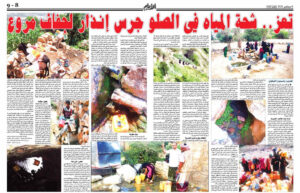When it comes to writing journalistic stories about climate change and severe weather conditions such as fires and floods, journalists need greater access to data sources, and this is what the Google Toolkit for Environmental Journalism provides. We share with you the most prominent of these tools that were reviewed with us by trainer Pamela Keserwani, a teaching fellow in the Google News Initiative. The Middle East and North Africa region during a session presented in cooperation with the Climate School Initiative on Thursday, January 18.
Environmental Insights Explorer:
It is a tool provided by Google that aims to provide accurate data about carbon emissions and climate changes in cities.
This tool can be used to analyze emissions data and identify areas where improvement is needed. You can use this information to enhance your story and illustrate the impact of climate change on cities and communities.
Global Forest Watch:
It is a tool that allows you to monitor changes in forest coverage around the world. You can access up-to-date data and satellite images to pinpoint the locations of wildfires and illegal logging. This information can be used to shed light on the problem of forest destruction and its impact on climate change.
Global Surface Water:
It helps monitor changes in surface water levels around the world. You can get detailed data about water changes in rivers, lakes and swamps. This tool can be used to detect floods and climate changes affecting water resources and local communities.
Global Fishing Watch:
It allows monitoring fishing activities around the world. You can use this tool to track fishing activities and identify illegal or overfished areas. This information can help monitor the impacts of the fishing industry on oceans and endangered species.
Pinpoint:
It is a tool that allows you to visualize and discover Earth's changes over time.
You can view high-resolution satellite images and compare available data to identify landscape changes and changes in land use. This tool can be used to illustrate the impact of human activities on the environment and climate change.





